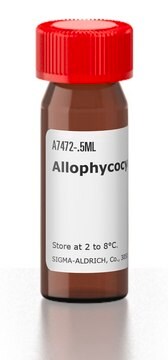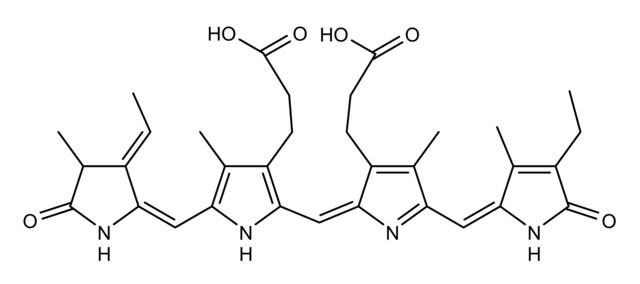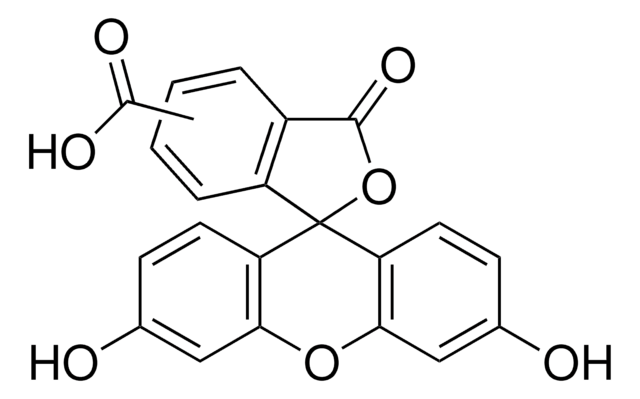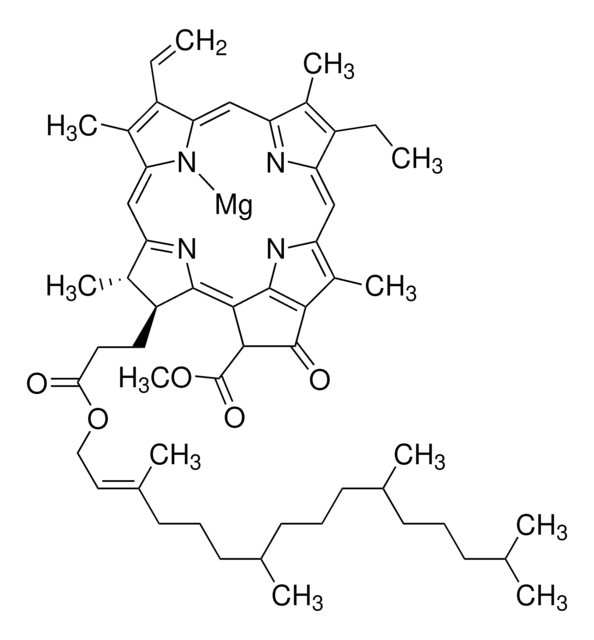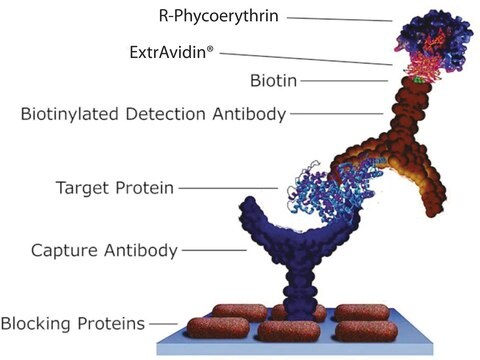52412
R-Phycoerythrin
BioReagent, passes test for gel electrophoresis
Synonim(y):
R-PE, phycobiliprotein
About This Item
Polecane produkty
linia produktu
BioReagent
Poziom jakości
stężenie
≥10.0 mg/mL (UV)
metody
electrophoresis: suitable
fluorescencja
λex 542 nm; λem 575 nm in 0.1 M phosphate pH 7.2
przydatność
passes test for gel electrophoresis
temp. przechowywania
2-8°C
Powiązane kategorie
Opis ogólny
Zastosowanie
Komentarz do analizy
Kod klasy składowania
12 - Non Combustible Liquids
Klasa zagrożenia wodnego (WGK)
WGK 1
Temperatura zapłonu (°F)
Not applicable
Temperatura zapłonu (°C)
Not applicable
Środki ochrony indywidualnej
Eyeshields, Gloves
Wykazy regulacyjne
Wykazy regulacyjne dotyczą głównie produktów chemicznych. Można w nich podawać ograniczoną liczbę informacji na temat produktów niechemicznych. Brak wpisu oznacza, że żaden ze składników nie znajduje się w wykazie. Użytkownik odpowiada za zagwarantowanie bezpiecznego i zgodnego z prawem stosowania produktu.
EU REACH Annex XVII (Restriction List)
Wybierz jedną z najnowszych wersji:
Masz już ten produkt?
Dokumenty związane z niedawno zakupionymi produktami zostały zamieszczone w Bibliotece dokumentów.
Klienci oglądali również te produkty
Nasz zespół naukowców ma doświadczenie we wszystkich obszarach badań, w tym w naukach przyrodniczych, materiałoznawstwie, syntezie chemicznej, chromatografii, analityce i wielu innych dziedzinach.
Skontaktuj się z zespołem ds. pomocy technicznej
